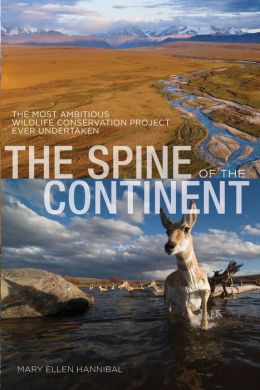 Within a population of individuals of a species, scientists and wildlife managers hope to see LOTS of diversity at a genetic level, in the individuals’ genes. Think about it – if every plant or animal in an ecosystem has the exact same genetic make-up, that ecosystem will be pretty vulnerable if a disease sweeps through. If the individuals in a population have some diversity in their genetic make-up, though, perhaps a few of them will have the genetic where-with-all to survive a disease outbreak.
Within a population of individuals of a species, scientists and wildlife managers hope to see LOTS of diversity at a genetic level, in the individuals’ genes. Think about it – if every plant or animal in an ecosystem has the exact same genetic make-up, that ecosystem will be pretty vulnerable if a disease sweeps through. If the individuals in a population have some diversity in their genetic make-up, though, perhaps a few of them will have the genetic where-with-all to survive a disease outbreak.The problem in today’s world of over 7 billion people is that humans are encroaching on most natural populations of plants and animals and locking them into specific geographic areas. Animals and plants need to be able to breed with many other individuals in order to keep the genetic diversity of a population rich. Think about it – where would you expect to see more genetic diversity in humans:
- in a small town of 500 people who only intermarry with one another?
- in a larger area of 1500 people, including immigrants from other towns, all of whom intermarry?
“Wildlife corridors” are one possible solution to this problem. By preserving large or small (depending on the size of the animal) swaths of wild lands, conservation managers hope to help populations interbreed and remain healthier. One example you might have seen in the news is the Yellowstone to Yukon corridor (Y2Y). This project is an ambitious attempt on the part of environmentalists, state and federal officials, and private landowners to maintain corridors to allow interbreeding for species large (grizzlies) and small (ocelot). The project is not complete, but is a fascinating example of the efforts of folks dedicated to protecting our environment.
If you
 ’d like to read more about the Y2Y corridor, be sure to check out these books, and be sure to support the Y2Y Corridor:
’d like to read more about the Y2Y corridor, be sure to check out these books, and be sure to support the Y2Y Corridor:The Spine of the Continent, by Mary Ellen Hannibal. 2012. Glove Pequot Press, Guilford CT. 248pp. This book tells the stories of individuals involved in the Y2Y effort, giving the reader an interesting look at the personalities and debates behind the conservation and ecological theory supporting corridors.
Yellowstone to Yukon, Freedom to Roam, by Florian Schulz. 2005. The Mountaineers Books. 196 pp. I had the pleasure of meeting Florian Schultz at a National Geographic presentation on the making of this spectacular book of photographs. Mr. Schultz’s dedication and enthusiasm for this cause is infectious. He wrote a note to my children in our book that illustrates his enthusiasm: “When I was a boy I played in the forest stalking after wildlife. I hear you also love wild animals like wolves. I just saw a whole pack and photographed them last year. It is so exciting!”

No comments:
Post a Comment